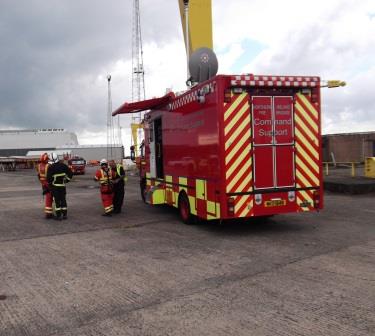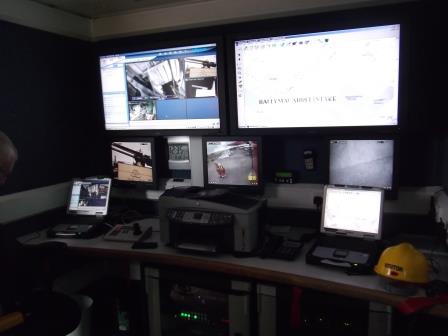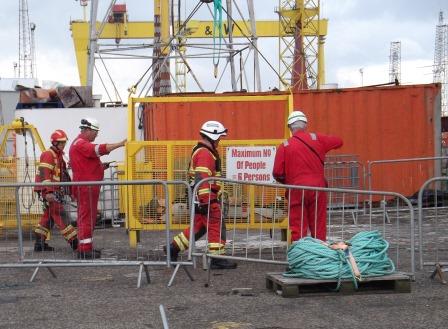With vast gantry cranes, tall fabrication halls, deep dry docks, construction of complex structures, ships and rigs, the range of physical challenges presented within H&W are varied. Consequently the emergency procedures, developed over decades of such assessments and exercises, need to be reviewed regularly to ensure best practice and competence.
20 members of the emergency services arrived with seven vehicles including a Command Module that was streaming live data back to the main emergency co-ordination centre in Lisburn. This live-link allows for real-time reaction to the situation on the ground, coordinating other resources as necessary.

A further benefit was a real-time audio-visual link between the Ambulance Technicians and trauma specialists in the Royal Victoria Hospital, allowing early intervention of potentially lifesaving decisions and actions directed by doctors and surgeons and carried out by the Ambulance Technicians at the site.
Bob Inglis, Harland and Wolff Safety Manager said, ‘The entire exercise was a resounding success. We thank all the participants for their involvement in this important event. To have so many experienced experts give freely of their specialist knowledge, to have them test and advise enhancements to the emergency procedures and for them to gain first-hand experience of the site is crucial.’

Neil McKerracher, Station Commander, Specialist Rescue Team said, ‘It was a great opportunity to work with other emergency services to test techniques and procedures in a unique situation which combined working at height and restricted spaces.
After a full debrief, the results of the exercise are now being established and shall be critically assessed for improvements.


